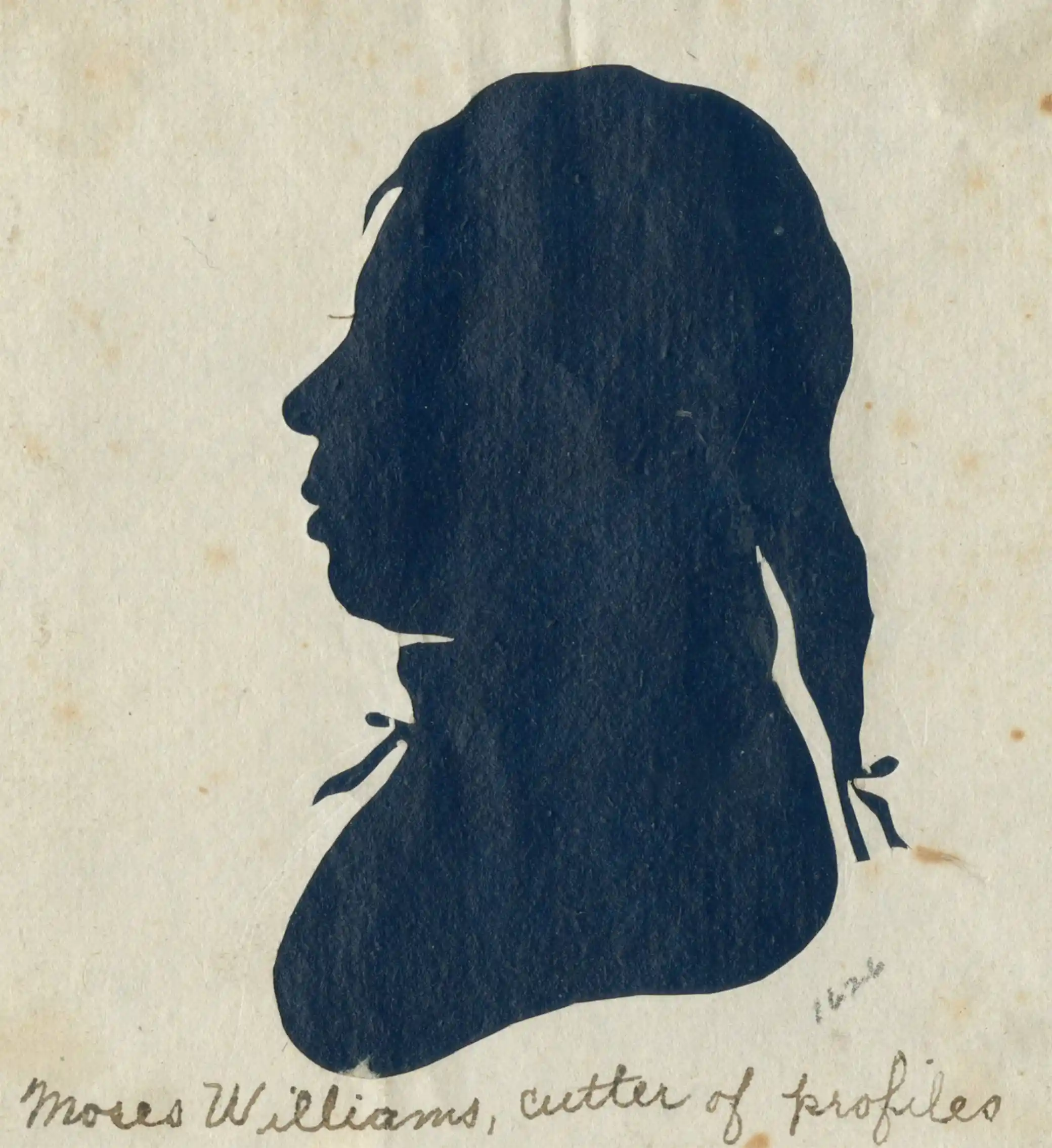We have never featured a silhouette artist in the 12 years of DailyArt's existence! It is time to change this situation!
Moses Williams was a skilled silhouette artist and entrepreneur born to an enslaved couple who were transferred to Charles Willson Peale (whose works we had presented in the past)—as payment for a pair of portraits he had painted while living in Maryland. Although Charles Willson Peale had supported Pennsylvania’s Act for the Gradual Abolition of Slavery in 1780, provisions in the law allowed Williams to remain in a form of indentured servitude within the Peale household even after his parents were emancipated. Unlike Peale’s biological children, Williams was not taught to paint (as painting was considered "higher art"), but he did learn the craft of silhouette cutting, selling his work to visitors at Peale’s Philadelphia Museum. During his first year as a silhouette artist at the museum, he produced over 8,000 profiles, earning 6 to 8 cents per silhouette. With his earnings, Williams purchased a house and married.
Moses Williams’s talent, resilience, and success in overcoming systemic racism and injustice make him a significant historical figure. To honor his contributions, the teaching gallery at the Peale Museum in Baltimore is named after him, ensuring his story remains central to the history of the 1814 museum building and the narratives shared about the Peale family and their legacy.
We present today's masterpiece as a part of Black History Month celebrations!
P.S. Kara Walker, a contemporary American artist, also uses silhouettes in her works, carrying on the legacy of Moses Williams. Here are 5 Black female artists you should know! For more stories on Black art, see the articles below.

-pma2022.jpg)
 Moses Williams
Moses Williams